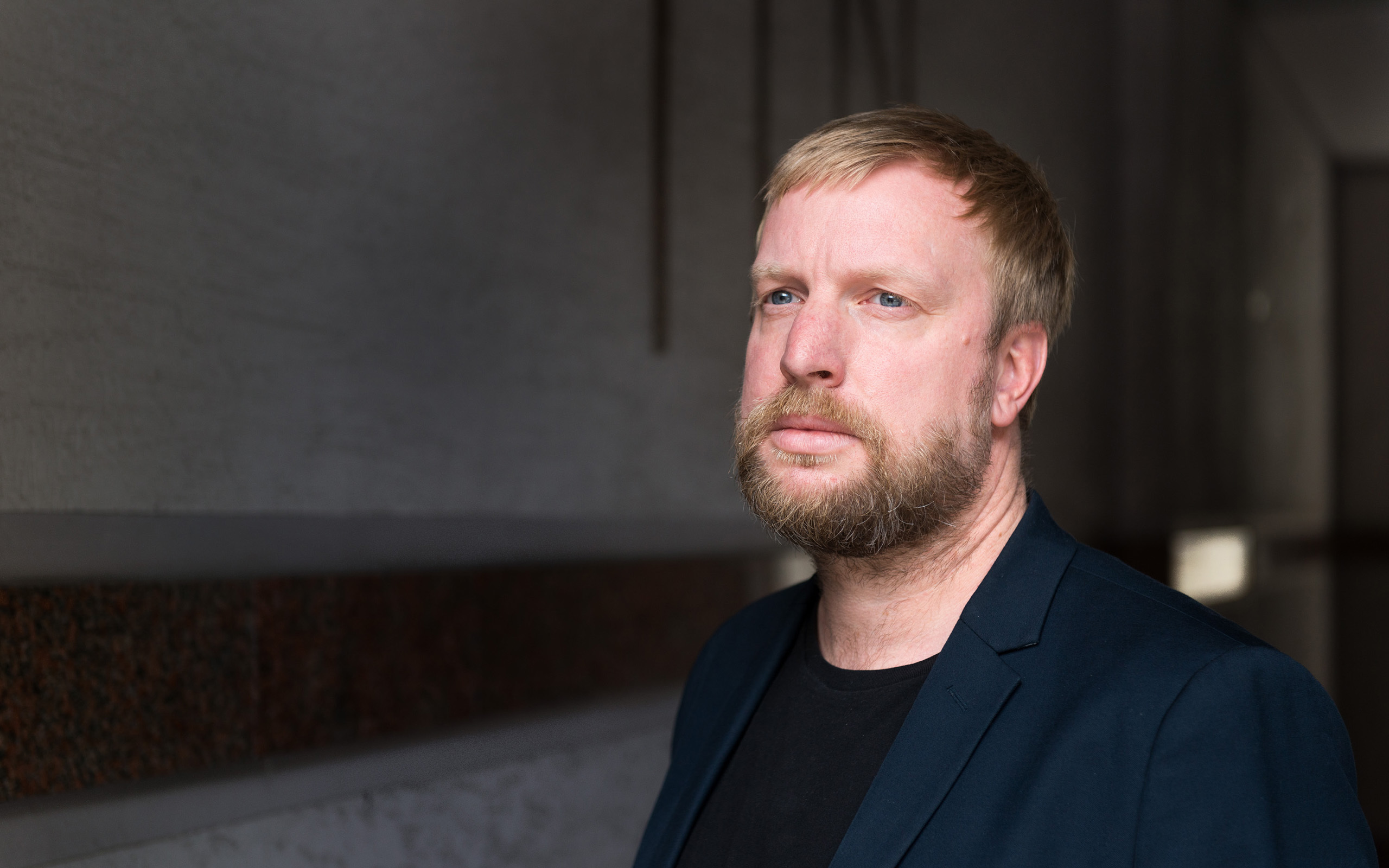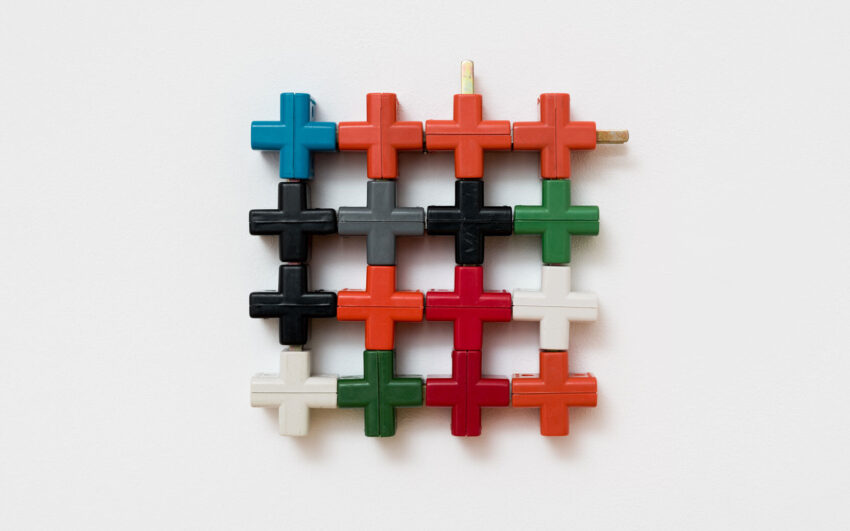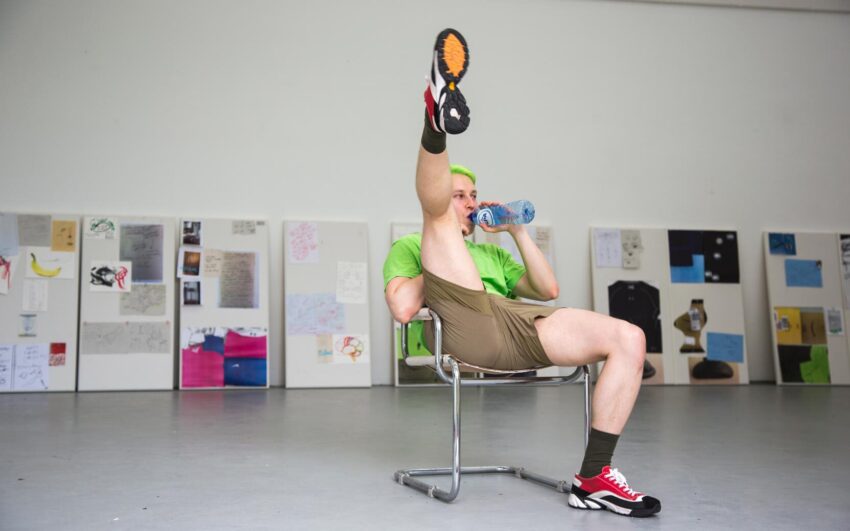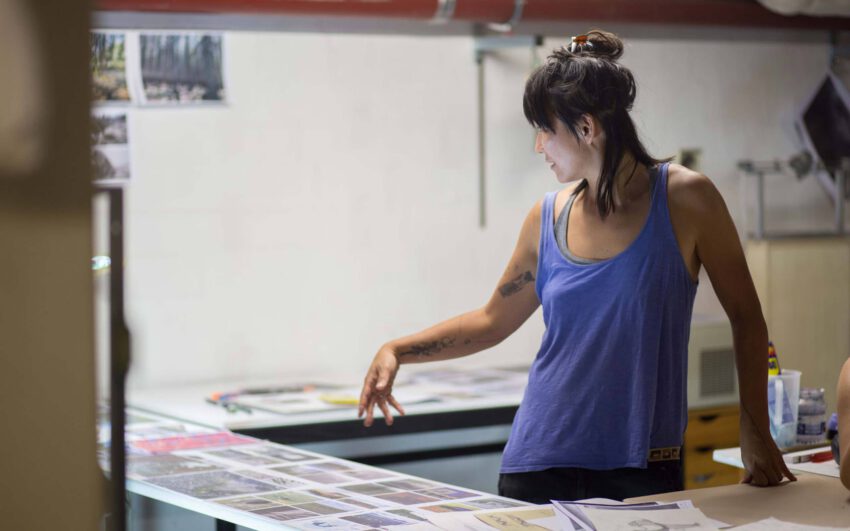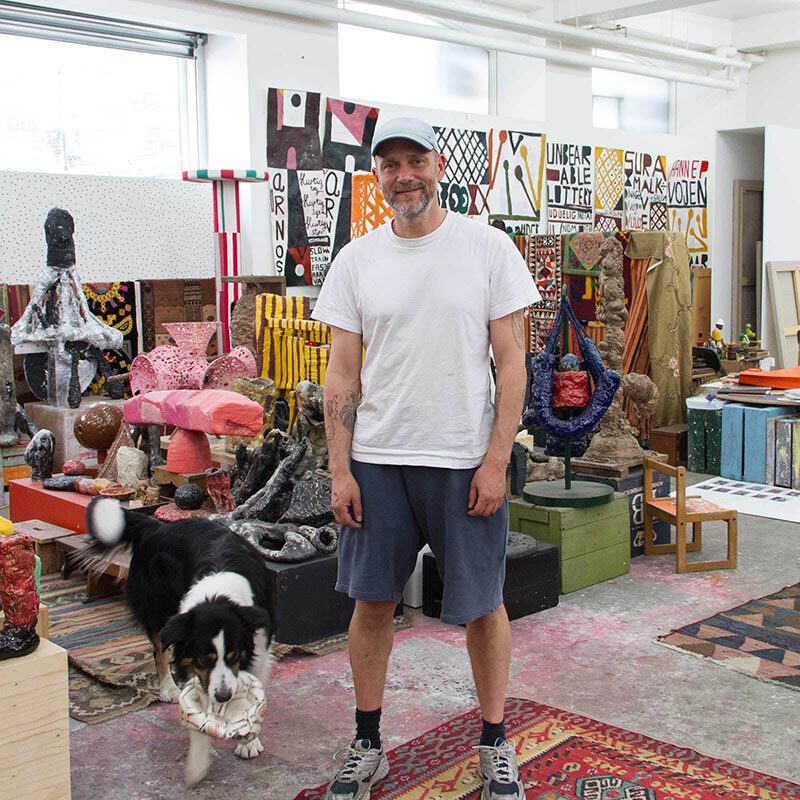Tobias Zielony became known for his photographs showing marginalized young people in disadvantaged urban areas – images of youths hanging around and waiting. Socially disadvantaged people and subcultures not perceived by the mainstream were a topic that had already interested Zielony during his studies in the industrial city of Newport, a cradle of British documentary photography. His photographs are portraits in the broadest sense, but they also have an element of the ethnological idea of participating observation. He spends a lot of time with the people he photographs, he wins their trust, has an interest in them. Driven by this curiosity and solidarity with his protagonists, his pictures always keep a tension between closeness and distance, an undistorted view of truth and fiction, staging and spontaneity.
Tobias, how did you arrive at photography?
Both my father and my brother were hobbyist photographers. I well remember the family pictures and the innumerable Kodachrome slides which my father took on a trip to America. It was somehow obvious that at one time I would also start photographing.
In 1997 you first went to Berlin and then attended the technical college, today’s Technical University Berlin?
I was relatively clear about wanting to become a photographer. Initially, none of the relevant academies had accepted me. Therefore I studied first at the HTW communications design where I learned among other things typography and lead typesetting, real old school.
In 2001 you moved to Newport, at the time already an economically underdeveloped industrial city in Wales. What of all things attracted you to this place?
Formerly, Newport actually consisted of a harbor and a steel mill. When I say I studied in Newport I can still hear many Brits saying, “I know it, it’s a shithole”. It really is not a city where you’d like to be. In Berlin I was only half as happy with my studies although at the time with Manfred Paul I had a super photography professor. In the neue Gesellschaft für bildende Kunst in Berlin I had seen an exhibition about British photography that thoroughly impressed me, and for a long time Newport was an important school for documentary photography. The term documentary photography wasn’t familiar to me at the time, but I was fascinated by the political attitude of the photographers and a way to photograph that had nothing in common with reportage aesthetics.
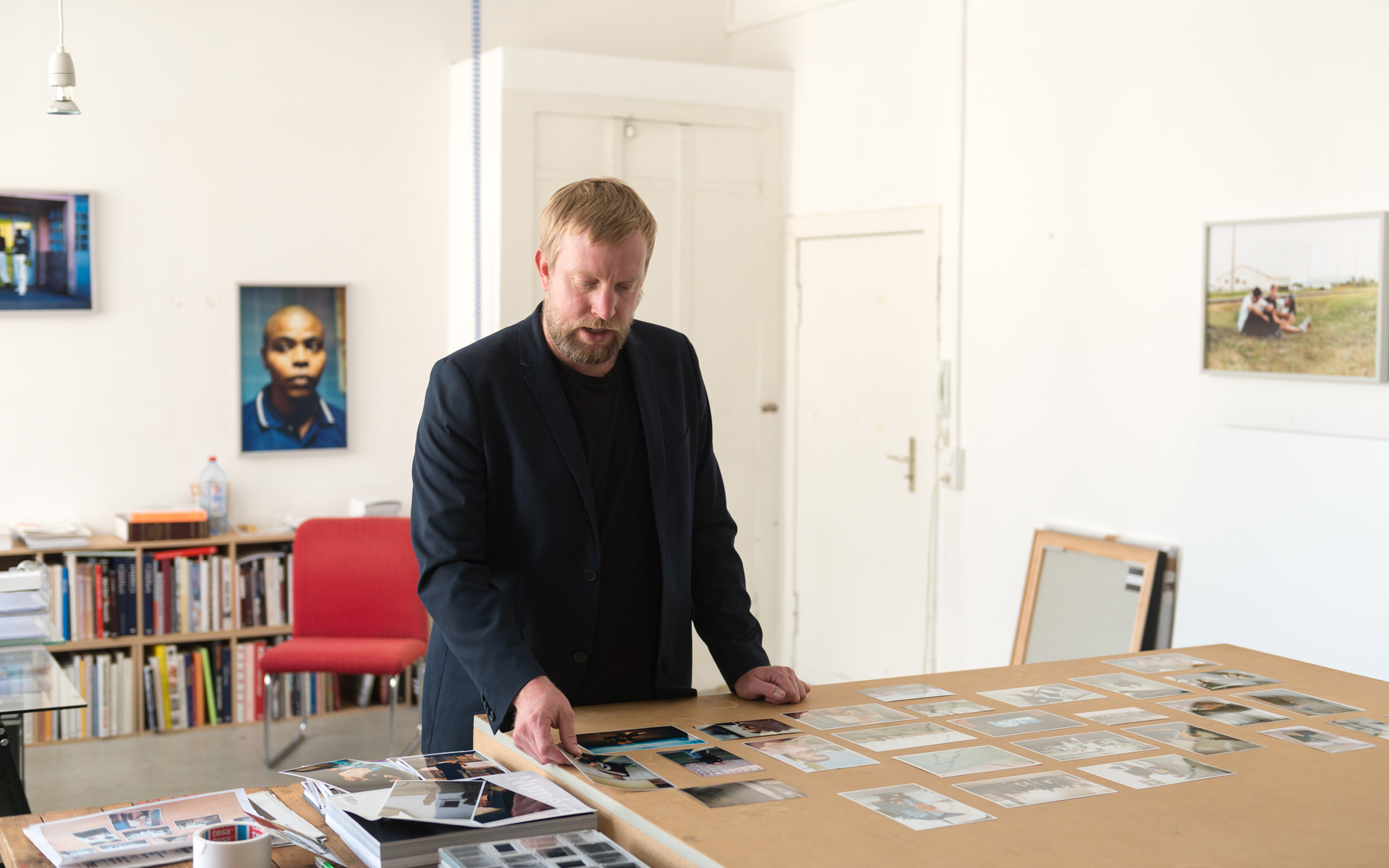
It is a persisting view that documentary photography represents the unadulterated truth.
Often the documentary is confused with the idea of the uncontrived, the objective. This dogma has persisted for quite a long time. There were only rare moments when I believed in a truthful documentation. The study has confirmed it. In Newport we rather constructed stories with pictures. And the term “story” does include fiction.
Considering Newport, it is also a place towards nobody is looking. Has the environment you found there been the reason?
In our studies in Berlin at the time, we learned street photography – photographing secretly with a wide-angle lens –, something that you can no longer do today. At the time, I was often roaming around in Marzahn until I was twice almost beaten up and eventually understood that you can’t simply photograph people secretly. For me it was much more interesting to talk to people and to get to know them. In Newport I have learned just that. Our teachers used to say, whoever can take good pictures in Newport can photograph anywhere in the world. And at first glance it is really not that simple to capture interesting pictures in that city. Eventually the people that you photograph grow close to your heart, and you think why is nobody interested in their lives? Perhaps it was a kind of defiance to ponder what meaning their situation might have in a larger political context? The fact that nobody is interested in them, does not mean that these people are unimportant or second-rate. Therefore it might have been a mixture of pragmatism, because I was there anyway, and a political conviction that developed to say: this is important now.
Living at the margins of society has become a distinctive part of your work since then.
The “margins” is a term that I am often confronted with regarding my work, but it’s a term of which I am critical. For in our perception we all find ourselves always at the center, departing from where we are at that moment. There are certainly people who are being marginalized, who live in poorer conditions or who are disadvantaged. But for these people too the center of their life takes place in their environment. I believe this is being felt in my pictures; that as the viewer one finds oneself close to the people whom I photograph and that one looks at from the “outside”.
We’ve just talked about the documentary style in photography with which people tend to connect you; you, however, seem to object to this. How would you categorize your work in your own words?
I consider the term documentary rather as a genre, as a construction, to which I do refer, nevertheless I would never call myself a documentarian. What I am interested in is not so much the documentary per se, but the heritage of the documentary. And to this heritage or to this tradition belongs the confrontation with marginalized groups.
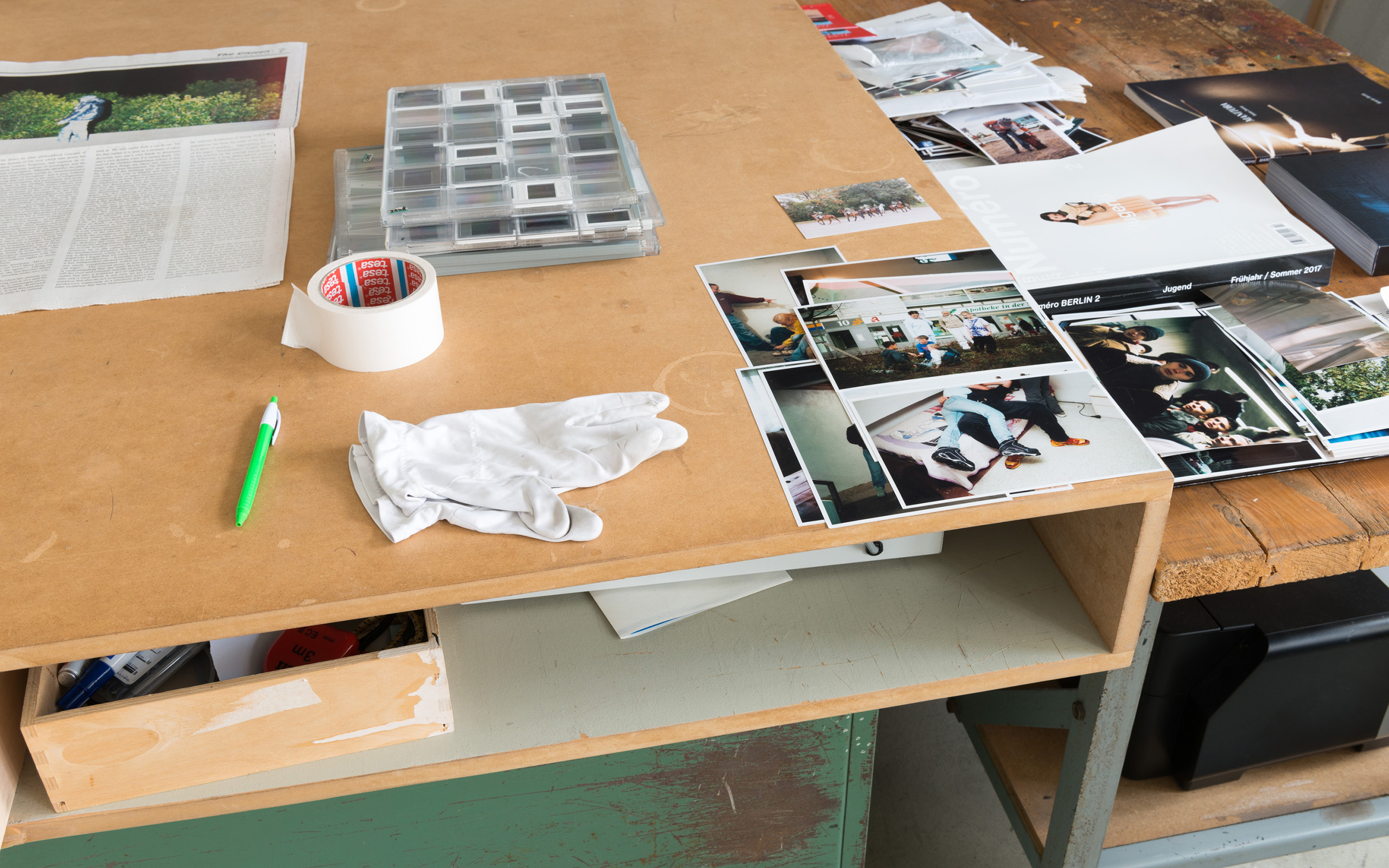
Do you see a relationship between your work and that of other important photographers such as Nan Goldin or Wolfgang Tillmans, who in their photographic oeuvre have provided insights in milieus like the gay scene and whose pictures often testify to a great intimacy with the portrayed people?
One could roughly categorize my work there, but at the same time there is a great difference. In contrast to Nan Goldin or Wolfgang Tillmans I am not a permanent part of the groups I portray. I go for a certain time to a particular place, another place, meet people whom, for the most part, I did not know before. At the same time, I keep a certain distance pertaining to my position as the photographer. The medium is just as much thematized as the people whom I photograph.
Does the fact that the camera is always present create a certain clarity regarding relationships?
Exactly. But intimacy is perhaps a more appropriate term. It is about creating a form of closeness, which factually might not even exist, at least not permanently in the sense of a long relationship or a close friendship. This intimacy can exist just for a moment or for the duration of a one-and-a-half-year project.
Is it important for you to understand that it is clear that you stand amidst the group without being part of it?
Yes, because it always concerns questioning my role or questioning photography. It is not only about what you see in the pictures but also about the question what does it mean to take these pictures.
What is the essential question that drives you when you – let’s stay with that – go to the margin of the general attention?
For me it is inevitably the question: If a “margin” exists, what is the center? We find ourselves in a situation where this dissolves completely. What is the center? Who is now the center? Who is at the margin? What I used to utilize was the question of visibility and invisibility. Who is visible for whom and why? That is presently changing a lot, especially through social media.
How do you manage to establish trust with the people you photograph?
There is no secret that I wouldn’t share, but I believe it is an ability that can’t really be explained precisely. It is predominantly about the production of a picture. That is relatively clear, at least for me, and I hope also for the people whom I photograph. In the course of the twenty years that I have photographed, I have learned to find people who react to me and have a certain openness or empathetic ability. In Newport we were encouraged to take an immense number of photographs, to knock at doors and meet people constantly. And there are certainly people like me for whom that is a little easier. But it wasn’t easy for me right from the start. I can still remember the constant struggle I had to overcome my inability to address people. But when you do it again and again, you develop a certain experience.
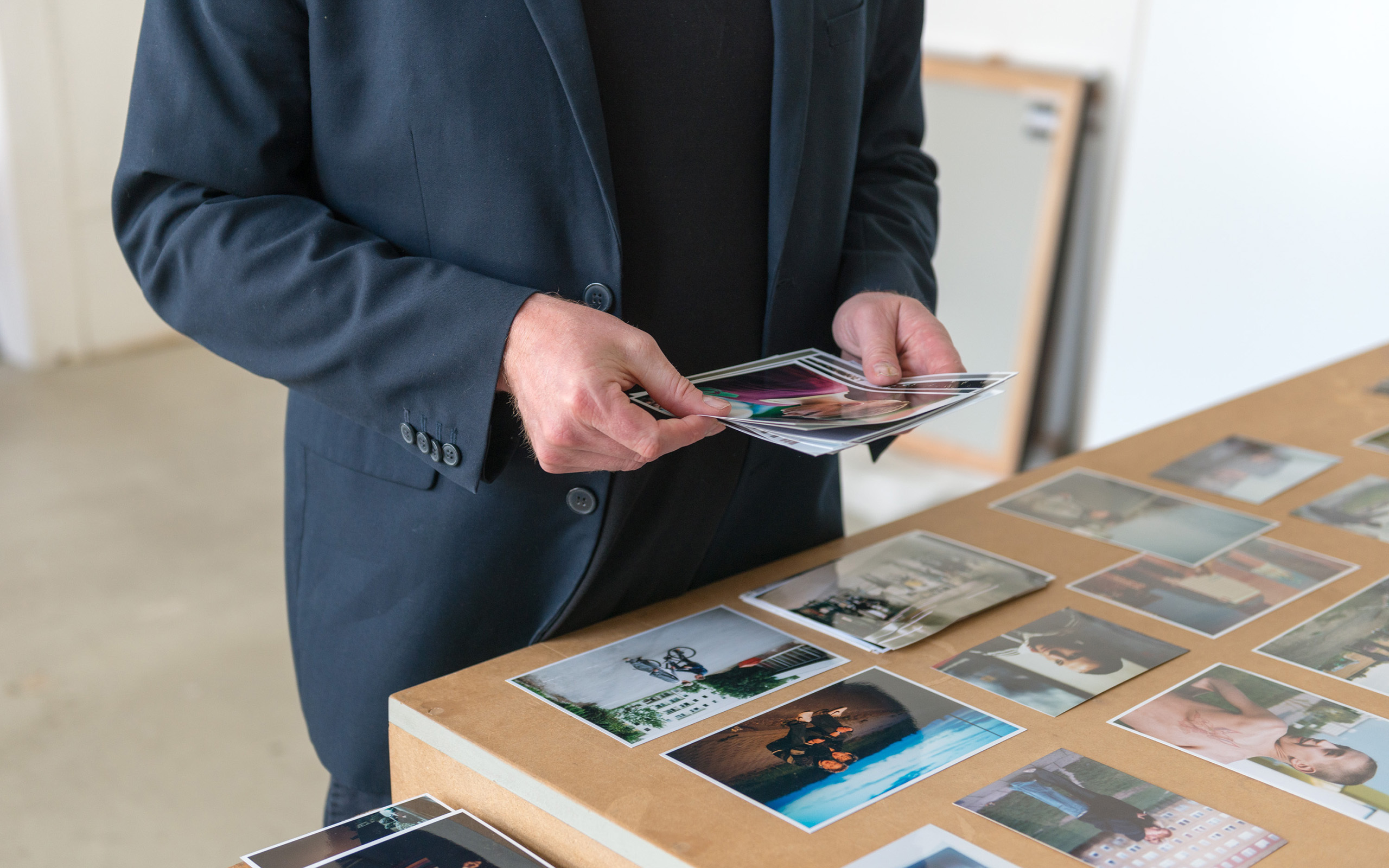
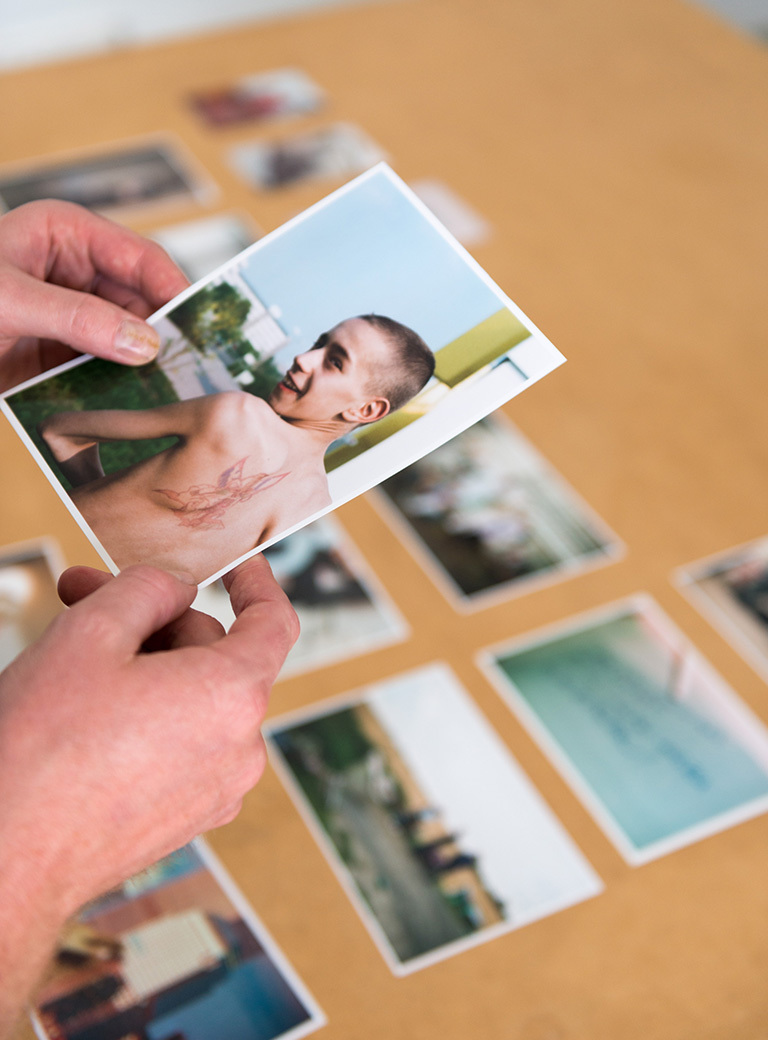
Why do you think people allow you to photograph them?
Perhaps, because they take it seriously when they understand that I take them seriously. We spend a lot of time together; I am interested in them. And then it is certainly about appreciation. For some it might be simply boring. Sometimes it is about vanity. There can be many reasons.
Have you ever encountered a situation that turned dicey for you? A camera can be a provocation, even if used discretely.
Up until now, I’ve never been injured or been beaten up which is certainly a kind of miracle, I have to say. (Laughs) But often I often came close to it. In Marseille someone once snatched the camera from my hands and tore the film out. Also I was once in a sort of “Russian Disco” and someone knocked the camera out of my hands and threatened to beat me up; but nothing serious has ever happened to me.
Why do you think is the camera considered such a danger for some people?
Twenty years ago, people were much more suspicious, some thought I was a policeman or a spy or something like that. These days, people are constantly taking photos of themselves and others, so suspicion towards a camera has become less as has the sense of intrusion. But there are people who with good reason say that they don’t want to be photographed. Even I sometimes develop a kind of aversion when I see other photographers and I ask myself how I appear when I move with the camera.
Can you describe on the basis of one of your projects how you approach a group of people and how you win their trust, for example for your series Jenny Jenny for which you portrayed several women who were Berlin streetwalkers.
The first meeting was actually completely accidental. I addressed a couple in the subway asking if I may photograph them. We got off together and I asked where I could meet them again. The woman answered, “Here. I work here on the street”. I met with the women of Jenny Jenny over a very long period of time, from 2011 until 2013, I met them again and again and got to know some of them very well. There was a great closeness, surely also because they knew that I wasn’t interested in sex or in being a voyeur. We could talk very openly, also about the role, which every woman has to play in her job. The life of a prostitute is not really simple. The job itself is hard, and every day produces new problems. The two years I spent on Jenny Jenny were very intensive, and I didn’t photograph at every meeting. Developing empathy for the everyday situation of the women and to produce the pictures at the same time was not easy.
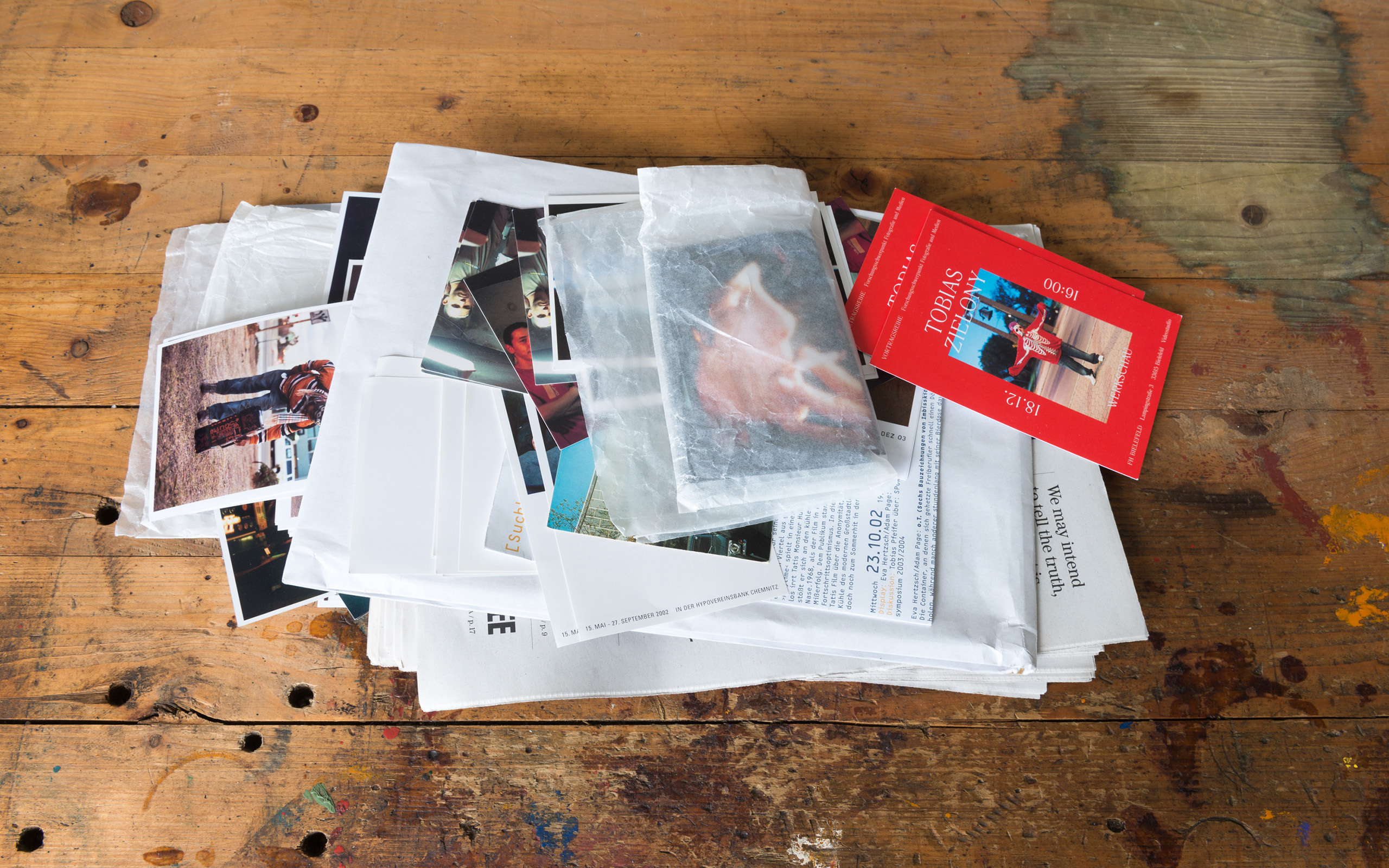
Do you pursue a specific concept for the pictures in a series?
The beginning is always a simple search. I sometimes work without paying attention to technical settings like correct exposure; I just shoot. You must have a certain openness. When you always judge whether something is good or bad, you limit yourself too much. Sometimes I made multiple exposures without knowing what I was looking for. There was simply the hope to find something. In the second phase I look closer and I think about where it leads me. Mostly it is two, three pictures that decide the further direction. Sometimes you are missing a few pictures in the end without knowing what they have to look like. You go back twice like for my series in Kiev, only for one or two last pictures, which are really essential.
Can you describe how the selection of pictures proceeds?
I choose the final selection rather late, mostly by means of proofs, which I move for a long time on the table. I never decide while I photograph whether a picture will be part of a series. Meanwhile I can certainly see the result directly on the camera display while I am photographing. And often I know that it is a good picture! But only in the work process it becomes clear whether a picture will also play a role for the series. Juxtaposed with other pictures in different constellations it will become obvious how important a picture is for a series.
Do the pictures of a series tell an entire story, or they simply selected moments, which were important to you for various reasons?
That is a question that continues to occupy me. The term “story” is relatively difficult, because it suggests a temporal succession or a causal relationship. I think the complicated thing in my works is that they actually can’t be contained and as a viewer one doesn’t really know where one is and what exactly holds the pictures together. It is rather the pictures themselves that construct the context. Nevertheless, the interaction creates a space and a field of tension that can definitely be understood as a story. Rather than in a catalog where my works are presented linearly one after the other I see my pictures as flexible constellations like here in my studio on the table. One begins moving the pictures around and notices that some attract while others repel each other. It often happens that a work revolves around one single picture or a group of images that are important to me, and then gradually the work evolves.
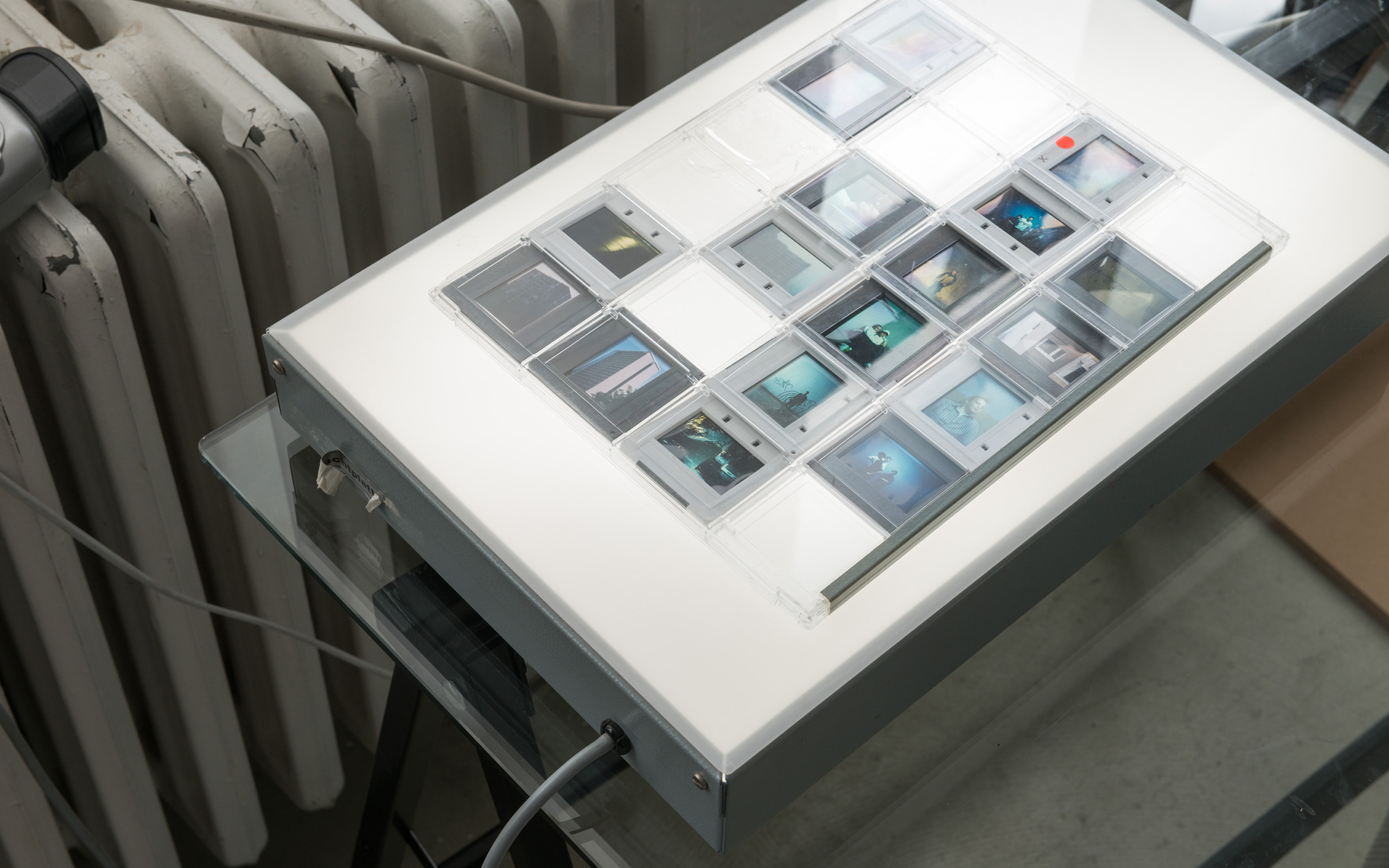
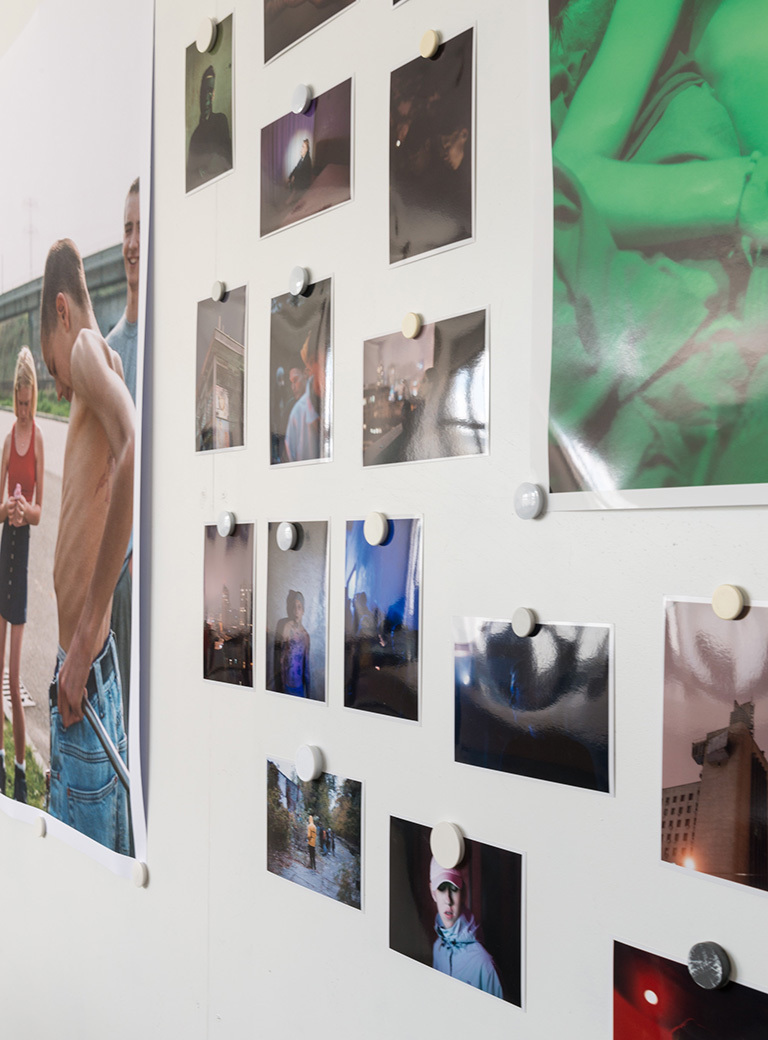
Most people probably know you through the series “Trona", a portrait of youths without opportunities in the Californian desert city with the same name that was created in 2008.
Trona had once been an industrial showcase city. Today, it is no more than a settlement in the desert, a place abandoned to itself where people hang out who are on Crystal Meth. I wanted to connect this excessive drug consumption with the history of the place. What happens when social structures fall apart, people steal from their neighbors? It was a very intense experience. It was actually the only time in the twenty years of my photographic career where I had a really strange feeling and thought it could turn dangerous. For these Crystal Meth types with whom I spent my time can get strange ideas. I have published Trona only two years later, because initially I didn’t see a series in these pictures. Only later it became really clear to me what held these images together.
We’ve already discussed the matter that documentaries are seldom intervention free and that you do not lay claim to documentary photography even if it appears otherwise. How much staging occurs in your photographs?
Principally they are about observation from the center of the group. But even in ethnology, that is in participating observation of life styles and cultural expression it is clear that one changes something in that moment in which one observes. But I am also interested in how the youths perform and stage themselves. The camera or I as the photographer always play a role. One has to be aware that one eventually produces a picture, a construction of identity, of self-staging and self-assurance.
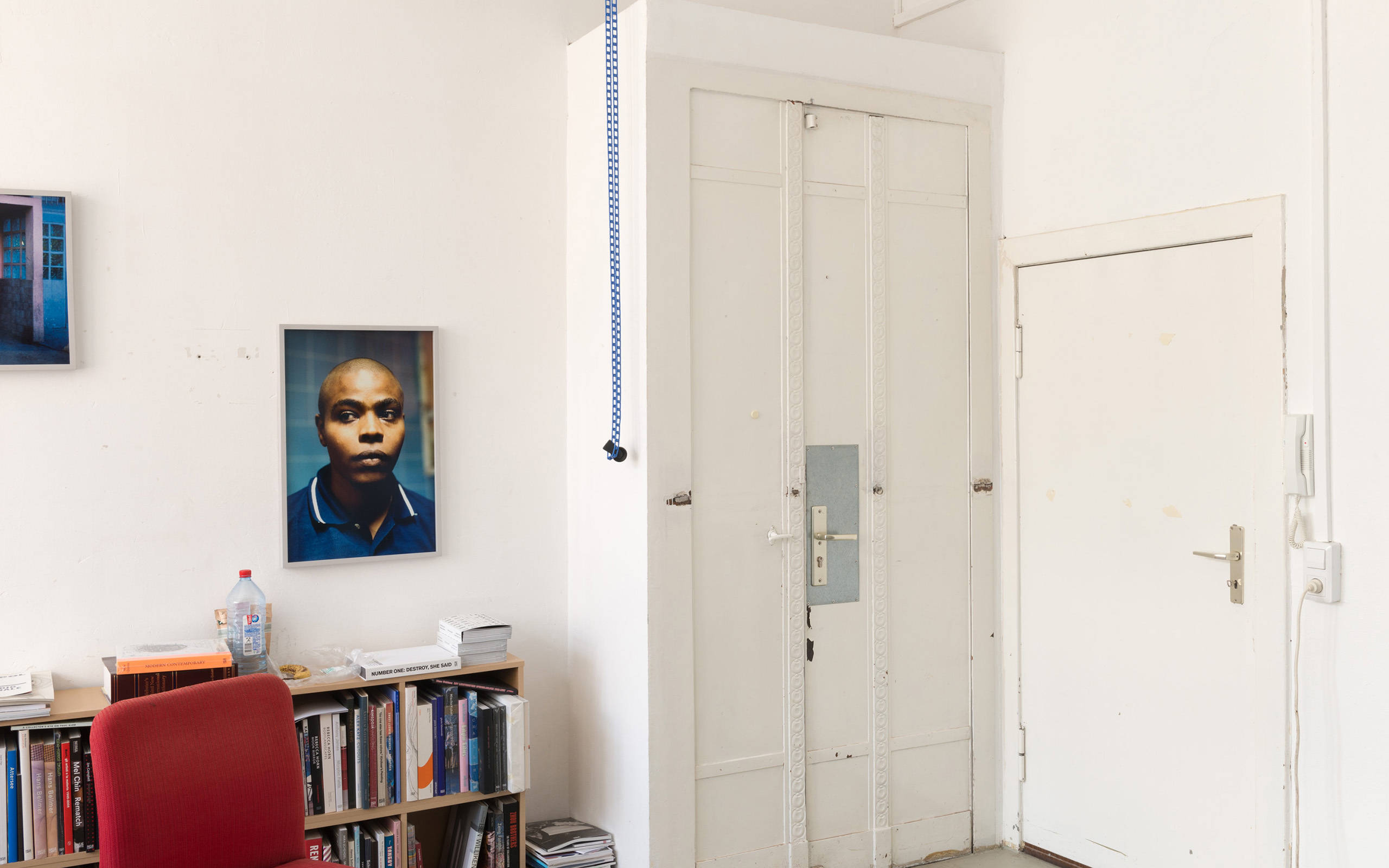
In 2015, you together with Olaf Nicolai, Jasmina Metwaly, Philip Rizk, and Hito Steyerl were invited to represent the German Pavilion on the 56th Venice Biennale and you chose the still very acute topic of “escape”.
Escape has always been a reality; the topic just hadn’t received much media attention at that time. With more and more refugees from Syria arriving while I was preparing for the Biennale the topic “refugees” was suddenly on everybody’s lips and at the center of European politics.
For your contribution you collaborated with the refugees who had occupied the roof of the former Gerhart-Hauptmann-School in Berlin-Kreuzberg.
Exactly, I have collaborated with African activists. Refugees are often automatically put in the role of the victim. But my work is about human beings who take their fate into their own hands, who leave the refugee camps in order to protest, who fight against the prohibition to be able to study or to move freely within Europe. They are brave people who often have already been politically active in their homelands and therefore had to leave their countries. And they are certainly victims of war and persecution as well, and I didn’t want to negate that. It was important to me to represent these people as self-determined. For my project I collaborated with African authors, and my pictures from Hamburg and Berlin were published with their texts in African newspapers and magazines. I have tried to turn around the direction of the coverage from the standard reporting.
What actually deviates from your other works? Most people whom you show in your pictures are hopeless and exist outside of the system.
I would never use the term “hopeless.” But there are differences indeed. At the time I said in an interview that these activists are the politically most active people that I have photographed.
Has your work become more political since the Biennale?
Yes, I would say so. I believe it was a moment for both the curator Florian Ebner as well as for the artists in which we all thought we could now actually not be political.
Was there something that connected your five artistic positions at the Pavilion?
We’ve met quite often. But one can’t say that we’ve always fine-tuned our conceptions and content. Nevertheless there are some topics that permeate the Pavilion. They may not have become clear to everyone, but one big topic was the role of images and how images are circulated and become visible. That is actually the topic of all the works. It was a very intelligent, political Pavilion, which was perhaps not easily read. The other topic that permeated all works in various ways was, interestingly enough, the roof. The roof as a place of escape but also as a place of protest or of heightened visibility! Indeed, there were these overriding topics.
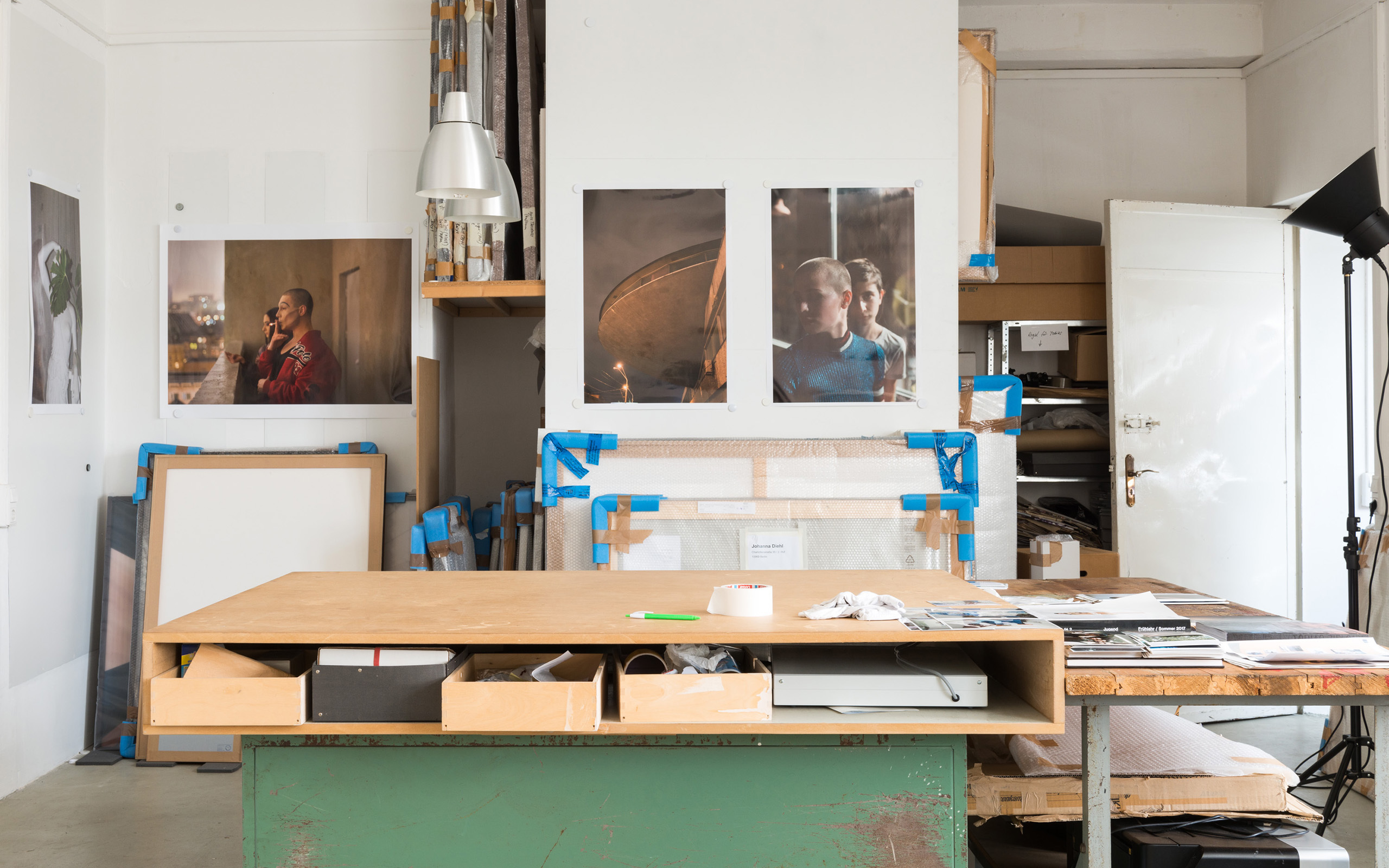
For your current series Maskirovka you were several weeks in Kiev. What has interested you there?
For me, it is primarily the Ukraine and especially Kiev, one of the central places where the European crisis manifests. Something is dissolving, and perhaps something new is emerging. At any rate, something there is massively changing. But it wasn’t my intention to visit the war zone in East Ukraine.
Instead you met people from the techno and LGBTQ scene and shared their everyday life.
In Maskirovka like in other works, too, I try to show subjacent cultural and social currents that are not necessarily interesting to the mainstream media but are always in conjunction with the political context. The people whom I photographed are all affected by what happens in the Ukraine right now – directly or indirectly. Many have participated in the protests on the Maidan and are politically active. During one month I met people from the scene in various clubs and in an airbnb apartment I had rented; some of them I have gotten to know very well and photographed repeatedly. For some it was dangerous to be openly gay or queer. To attend the Gay Pride Parade in Kiev, certainly means confrontation with the nationalists and right extremists and requires courage. War and repression are omnipresent, even if people just go to a rave.
What does the title Maskirovka, Russian or Ukrainian for masking, refer to?
The idea of the mask, the deception, is my attempt to connect the everyday world of the people with the larger political context. Escapism and travesty are omnipresent in Kiev’s techno- and LGBTQ scene and represent for me a reality which for many people there is perhaps more real than the the post soviet reality. Many young people disguise themselves at techno parties or mask themselves in order to play with their sexual identity. To wear masks has particularly in the Ukraine conflict also a political dimension. In order to protect themselves from teargas the protesters of the Maidan revolution wore gas masks. The special intervention units on the Crimea sent by Russia were also masked. The Russian term “Maskirovka” has a double meaning. It describes the Russian tradition of covert war strategy and military deception.
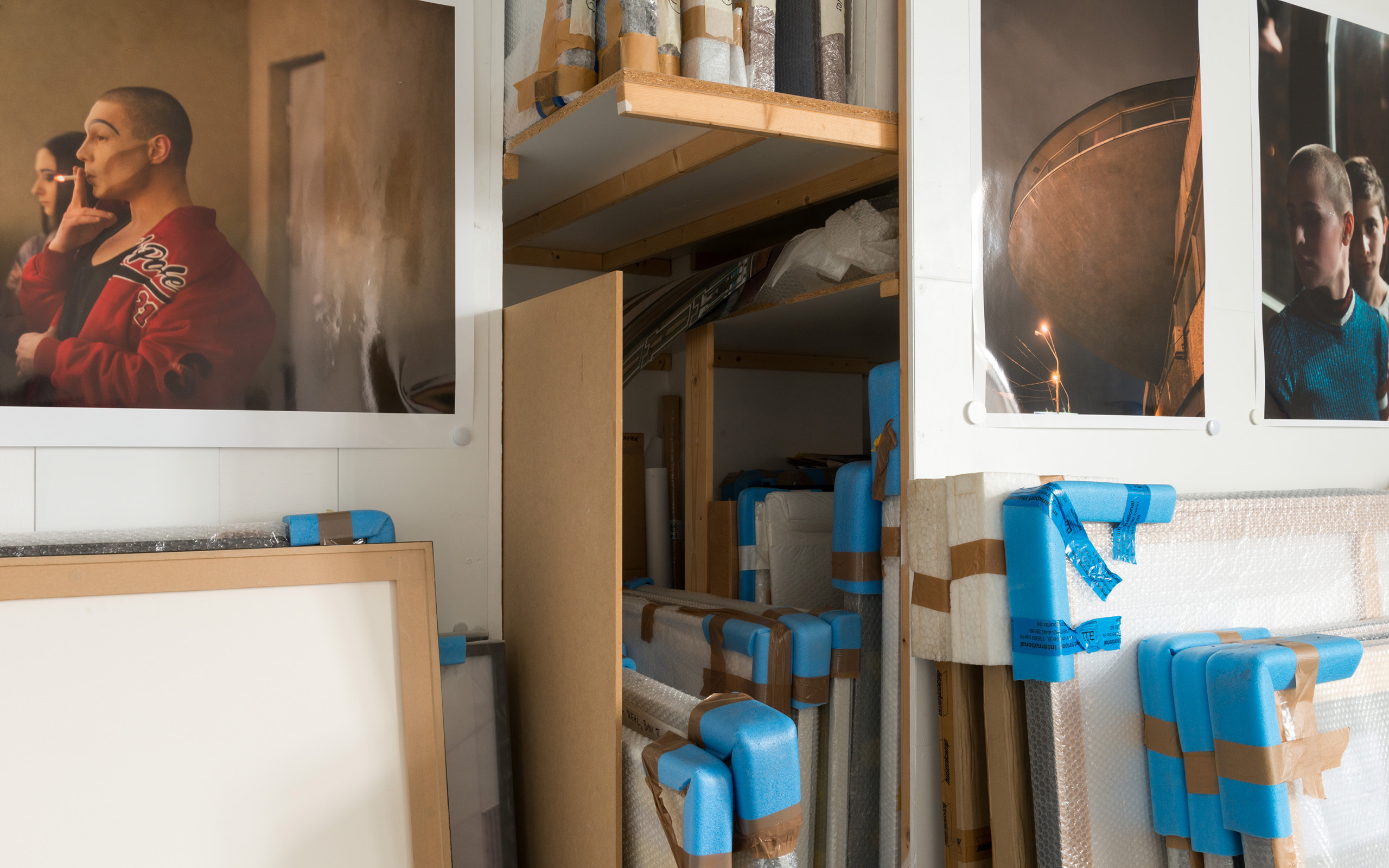
What projects are you planning next? Which groups of people or which places interest you?
I would like to go to Minsk in White Russia. Many people whom I met in the Ukraine have talked about it. I think that is, at the moment, a very interesting place. A short while ago I was in Japan and could well imagine revisiting the country in order to investigate among other things the subcultures there. At the moment I am working on a project in Riga. And I have always wanted to make a work on the topic “Police” or “Policemen”. But when I look at them I ask myself again do I really want to do that?
Perhaps you should go to the Mexican police?
Yes, I’ve thought about that too. But that might be a bit to extreme. (Laughs) But in that direction… the contradiction between legality and personal discretion, where it is also about corruption, I’d find that interesting.
Can you describe how you would like to see yourself categorized in the history of photography?
At the time I began photographing, a categorization would have been easier. Perhaps somewhere between Michael Schmidt, Wolfgang Tillmans, and Paul Graham, and certainly Nan Goldin! In the meantime, however, an unbelievable image production takes place – a kind of image cosmos without a clear beginning and without a clear end, produced by people who photograph with their cell phones, favored by the increased importance of pictures in the social media. This development inevitably poses the question what photography still is and what it means today to be a photographer. In retrospect it is difficult for me to judge what role my work could one day play. I only know that I will continue to do what I do.
Interview: Julia Rosenbaum, Florian Langhammer
Photos: Michael Danner
Links:
KOW Berlin


